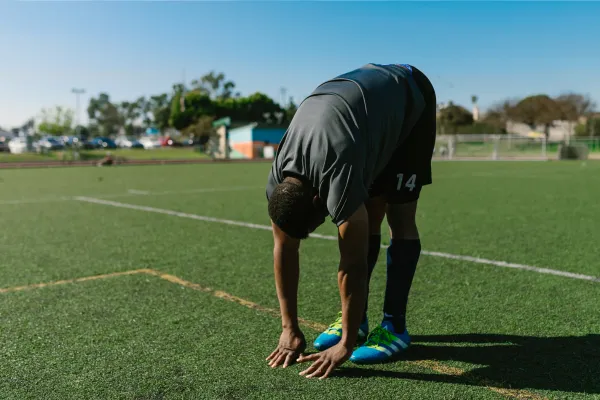More than training. It's an Edge.

Mobility Over Stretching: The New Flexibility Routine
Stretching used to be the warm-up default. But times have changed.
If you're still holding 30-second quad stretches before sprinting, it’s time to rethink. Because mobility (not just flexibility) is now the gold standard for athletic performance, injury prevention, and movement quality.
Let’s break down why.
Stretching vs Mobility: What’s the Real Difference?
Stretching = Passive. Holding a muscle in a lengthened position.
Mobility = Active. Moving through full range with strength and control.
👉 Stretching helps you access range.
👉 Mobility helps you own it and use it in performance.
That’s the difference between feeling loose and moving better.
When Should You Still Stretch?
We’re not anti-stretching.. But we use it strategically:
After training (to calm the nervous system)
Before bed (to aid relaxation)
Pre-training (only to unlock limited range- then we follow up with mobility)
When muscles are “guarded” and range is blocked
⚠️ Stretching without follow-up mobility = short-term gain, no long-term improvement.
A Sample Mobility Warm-Up We Use with Athletes
Here’s a 6–8 minute routine used with our field and court athletes:
90/90 Hip Switches – Improve rotation and control
World’s Greatest Stretch – Combine lunge, reach, and T-spine mobility
Quadruped T-Spine Rotations – Unlock the upper back
Active Ankle Rock-Backs – Improve dorsiflexion for better sprint and squat mechanics
Mini Band Walks – Fire up hips and glutes for change of direction
A-Skips or Pogos – Add rhythm and prep for speed
🧠 This isn’t just a warm-up—it’s performance prep.
Top Mobility Drills for Lower Body Performance
Copenhagen Hip Lifts – Adductor and core stability
Hip Airplanes – Dynamic control in single-leg balance
Deep Split Squats (Iso Holds) – Strengthen hips through range
90/90 Flows – Internal + external hip rotation
These drills build usable range, not just stretchiness.
Why Mobility Matters More Than Ever
In the past:
Long holds before games
Random stretches for “tight” muscles
No connection to strength, posture, or movement
Now:
Targeted mobility that flows into sprint, jump, and strength drills
Joint-specific, muscle-supported, and movement-focused
🔑 We train how you move-not just how far you can stretch.
What About Tools Like Foam Rollers or Bands?
✅ Foam rollers = Short-term tone reduction
✅ Bands = Great for active mobility with resistance
⚠️ Massage balls = Okay, but often overused
❌ 15-minute rolling-only sessions = Wasted time if not followed by active work
🧠 Tools are tools. Movement is the method.
How Often Should You Do Mobility Training?
2–3 focused sessions per week
3–5 minute mobility flows post-session
1–2 drills on rest days
Integrated into strength training (e.g. deep split squats, overhead work)
💡 Consistency > duration. Small daily doses work best.
Common Mobility Limitations That Kill Performance
Ankles – Affect sprint angles and knee load
Hips – Limit stride length and acceleration
T-Spine (Upper Back) – Reduces rotation, overhead lift quality, and posture
Fixing these doesn’t just make you feel better, it directly improves your performance.
Final Takeaway: Stretching Isn’t Dead, But It’s Not Enough
Old-school stretching has its place. But it won’t keep you powerful, reactive, or durable.
If you want to move freely, train harder, and stay in the game longer, mobility is the upgrade you need.
Stretch to unlock.
Mobilise to control.
Strengthen to keep.
STAY CONNECTED
QUICK LINKS
GYM HEADQUARTERS
© Athlete’s Edge Albury – All Rights Reserved